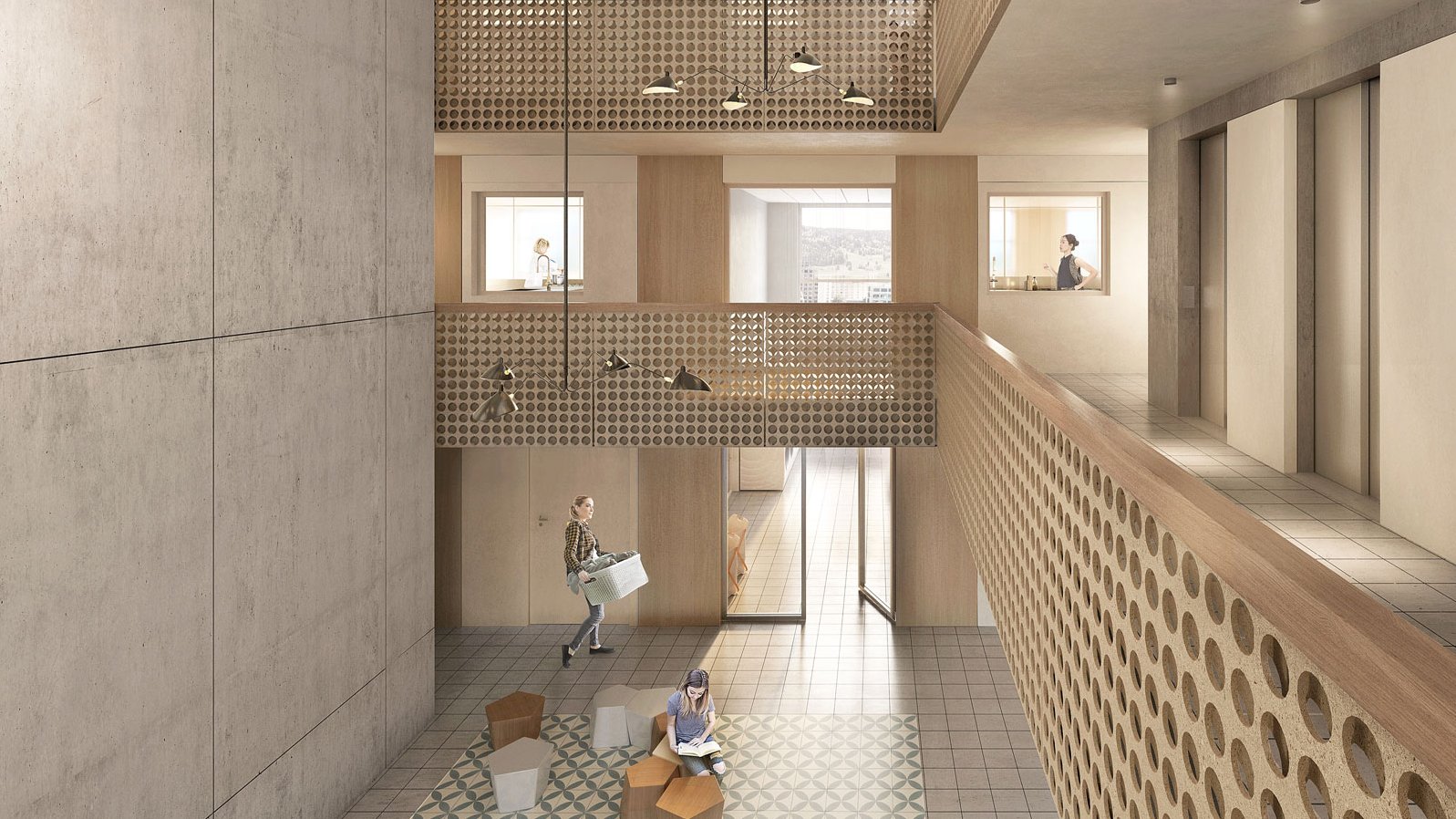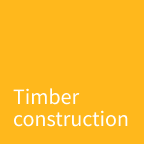
Sustainable record-breaking project
Why did Urban Assets Zug AG opt for a wooden construction method for the Pi project?
For us, it was clear from the very beginning that the high-rise building should be constructed in wood. On the one hand, we are always consciously breaking new ground with Urban Assets Zug AG and are therefore interested in the constructive possibilities of wood in high-rise construction. With the Pi project, we want to explore the constructional possibilities of wood and at the same time show our commitment to innovation and responsibility in technological issues. On the other hand, sustainability is at least as important to us – as it is in all our building projects.
How is this implemented in the project?
As a renewable, CO2-neutral and lightweight building material, wood is to have a load-bearing function in the Pi project and thus save a lot of concrete, especially in the foundation. However, the project also pursues sustainability goals on many other levels. For example, we are deliberately creating affordable living space for V-ZUG employees and professionals in the future Tech Cluster Zug, close to their workplaces and in the middle of the city where they mainly move around. The short distances to work limit the volume of traffic and reduce the need for transport space. In addition, the wooden high-rise will be connected to the Tech Cluster's ecological multi-energy hub (see box). It ensures the supply of CO2-neutral cooling and heating based on groundwater and seawater. In addition, photovoltaic elements are used both on the roof and integrated into the facade.
What are and were the biggest challenges in the planning phase?
It was a competition with very high standards. Our economic, design, social, technical and energy requirements were extraordinarily high. We didn't make it easy for the participating teams; after all, when planning such a lighthouse project, you always come up against contradictions and conflicting goals, that's part of it. This also applies to the costs. The originally estimated planning and construction costs were not enough and are now around 100 million Swiss francs, but the "multi-innovative" project also offers unexpected added value.
And what will the added value for future residents look like?
On the one hand, the Pi project will create sustainable, attractive, affordable housing, combined with a short commute – something that cannot be taken for granted in the city of Zug. Another central idea we are pursuing is the promotion of social coexistence. For example, three-storey piazzas in the centre of the building eliminate the vertical separation of traditional high-rise buildings and the otherwise usual anonymity between storeys. Vertical neighbourhoods are created. In combination with different, flexible flat types and exciting community offerings, we want to redefine living together in a high-rise building. Why is Implenia being used both as a timber constructor and as a total contractor? In the overall performance study, the trio of Duplex Architects, WaltGalmarini Engineers and Implenia convinced the entire jury with a coherent, innovative design. The solution provides precise answers to our complex and multidimensional questions. Implenia's many years of experience in timber construction were already evident in the design, and we also noticed that the company is open to breaking new ground. We also see it as a great advantage that timber construction is part of the total company. In this way, it can contribute much more intensively and participate more effectively in the development.
Picture credits: Hochhaus Pi, competition stand, architecture: Duplex Architekten, Zurich / visualisation: Filippo Bolognese
Project PI: Kick-off for the Tech Cluster Zug
With the Pi project, Urban Assets Zug AG is building the largest wooden high-rise in Switzerland at Baarerstrasse 104-108 in Zug. The 28 storeys will extend over a height of 80 metres and house around 200 flats. This will create affordable living space for V-ZUG employees and professionals in the future Tech Cluster Zug, as well as for the city. The groundbreaking ceremony for the project is expected to take place in the third quarter of 2022, with completion scheduled for early 2025.
The Pi project marks the start of Metall Zug AG's Tech Cluster Zug. In this 80,000 square metre innovation quarter, production, development, research, commerce and living will combine to form a dynamic ecosystem.



